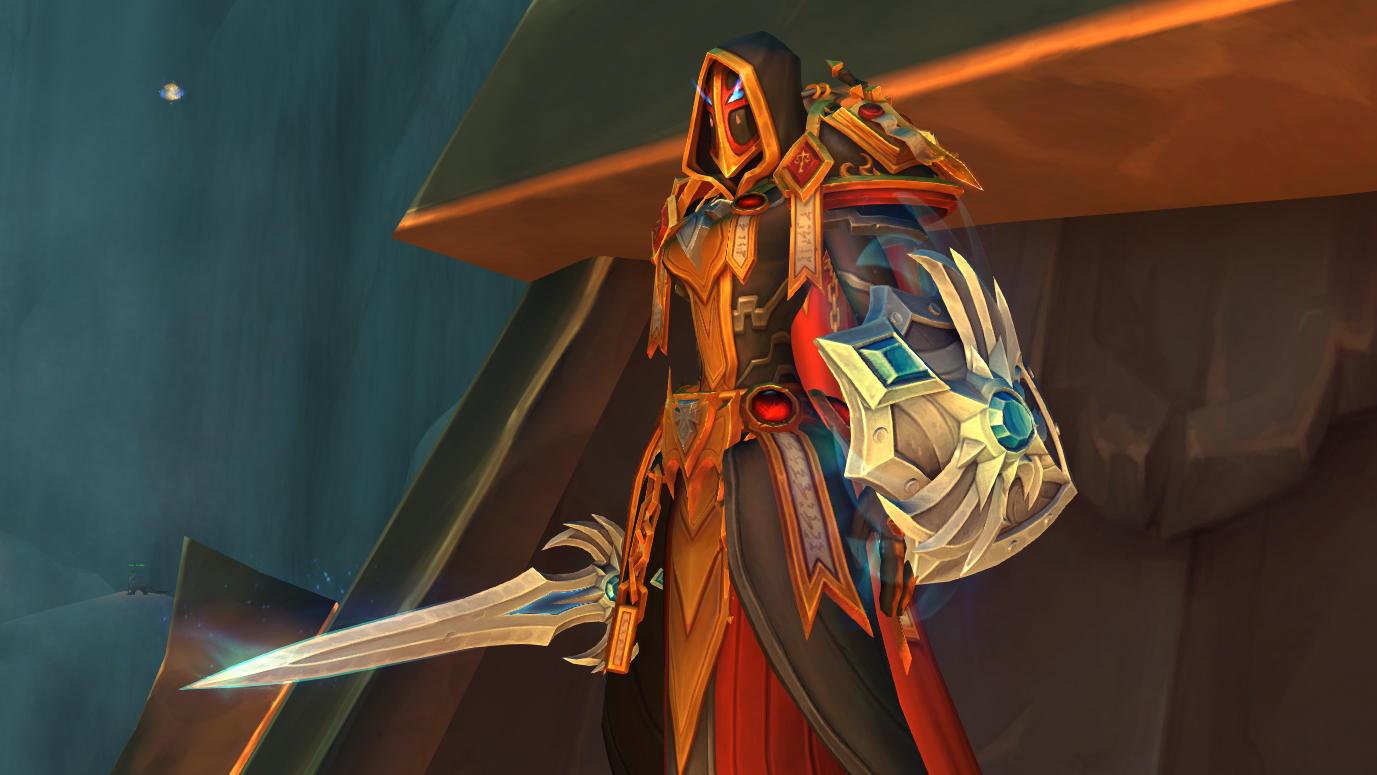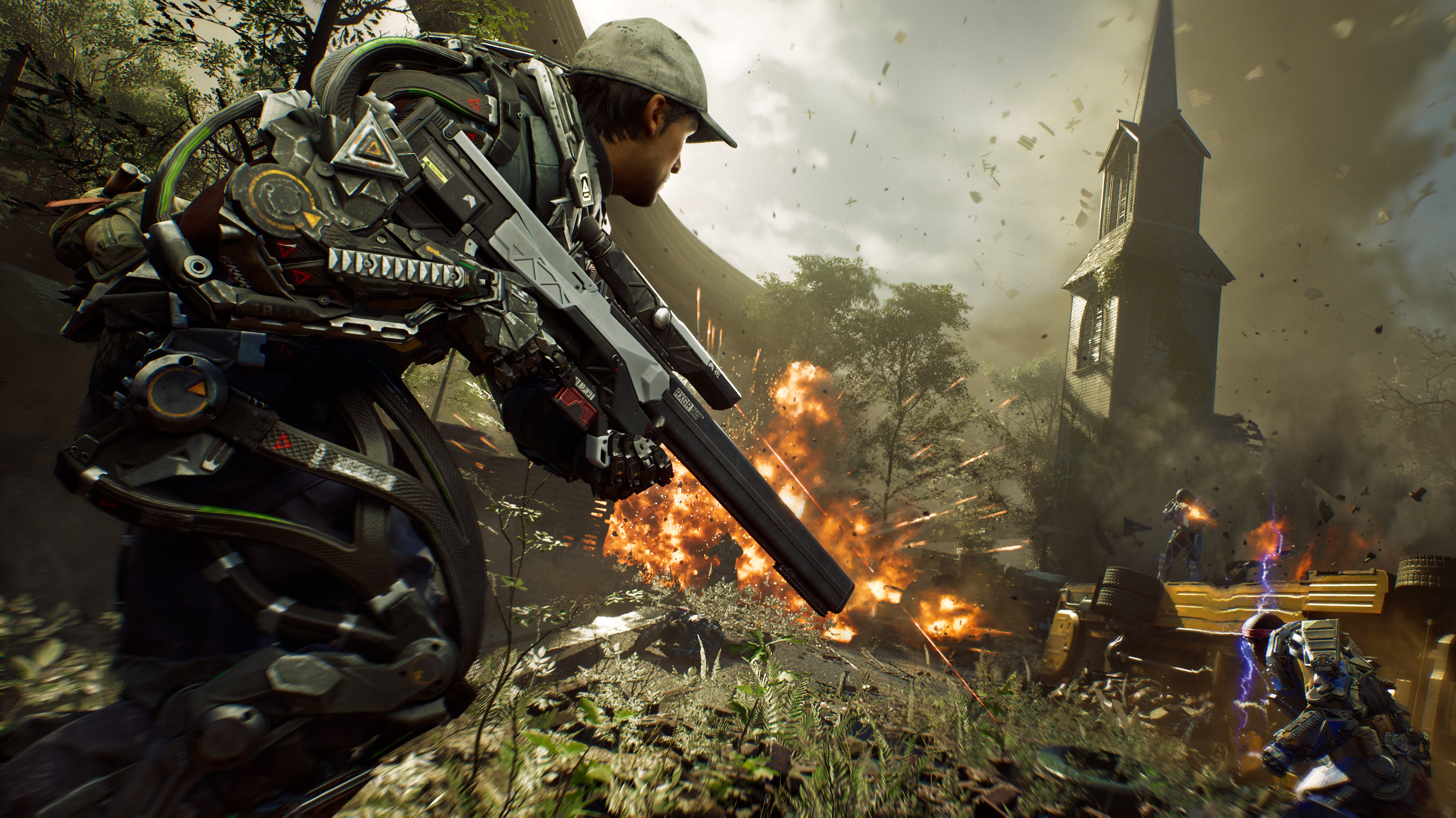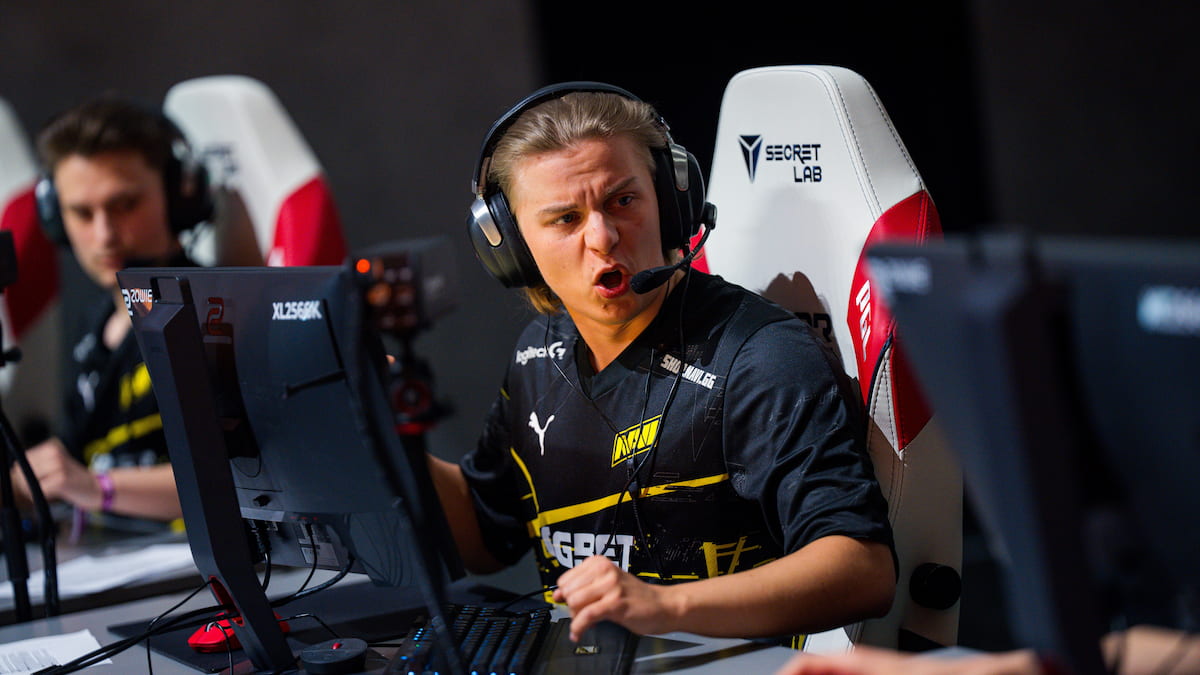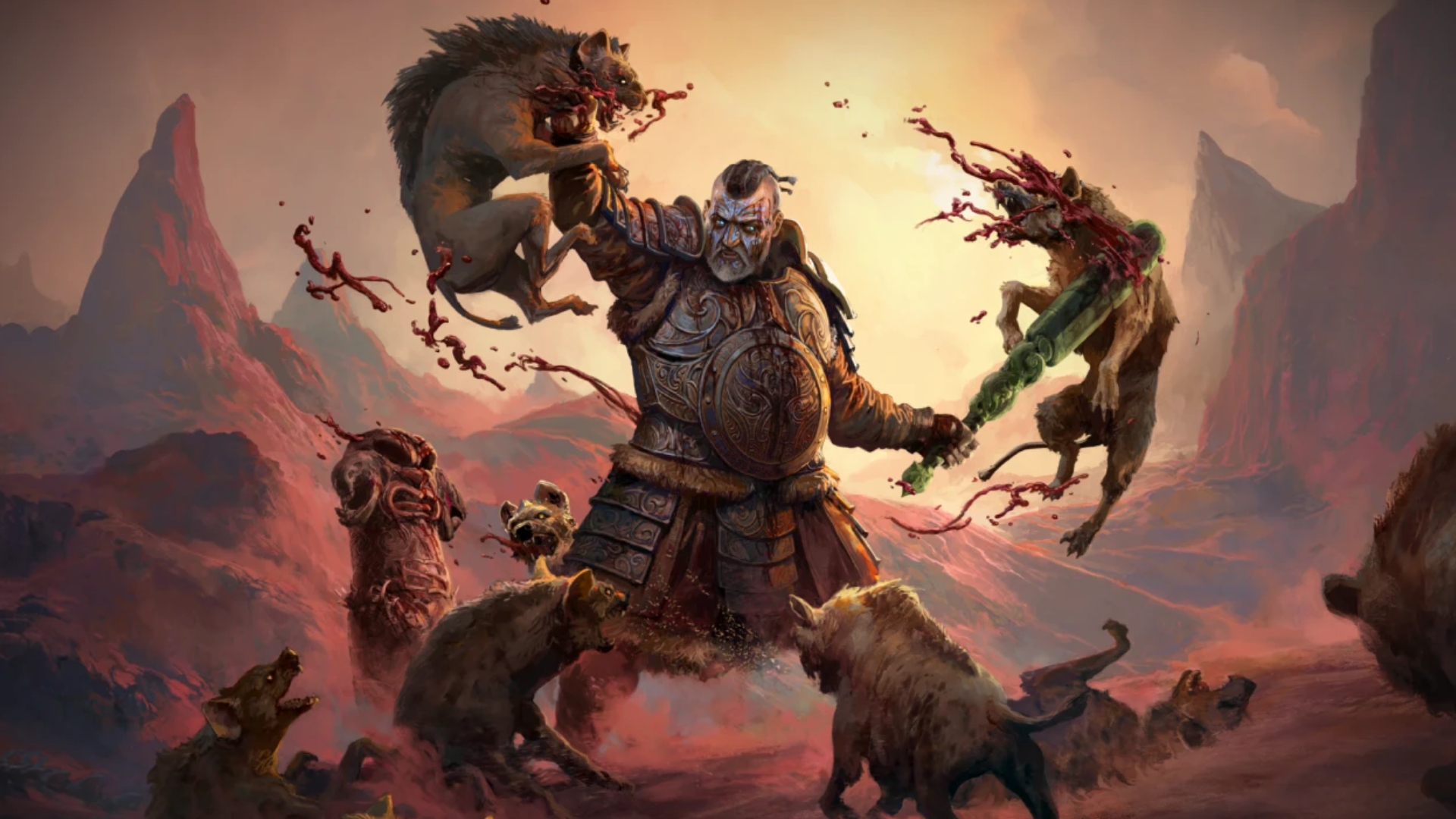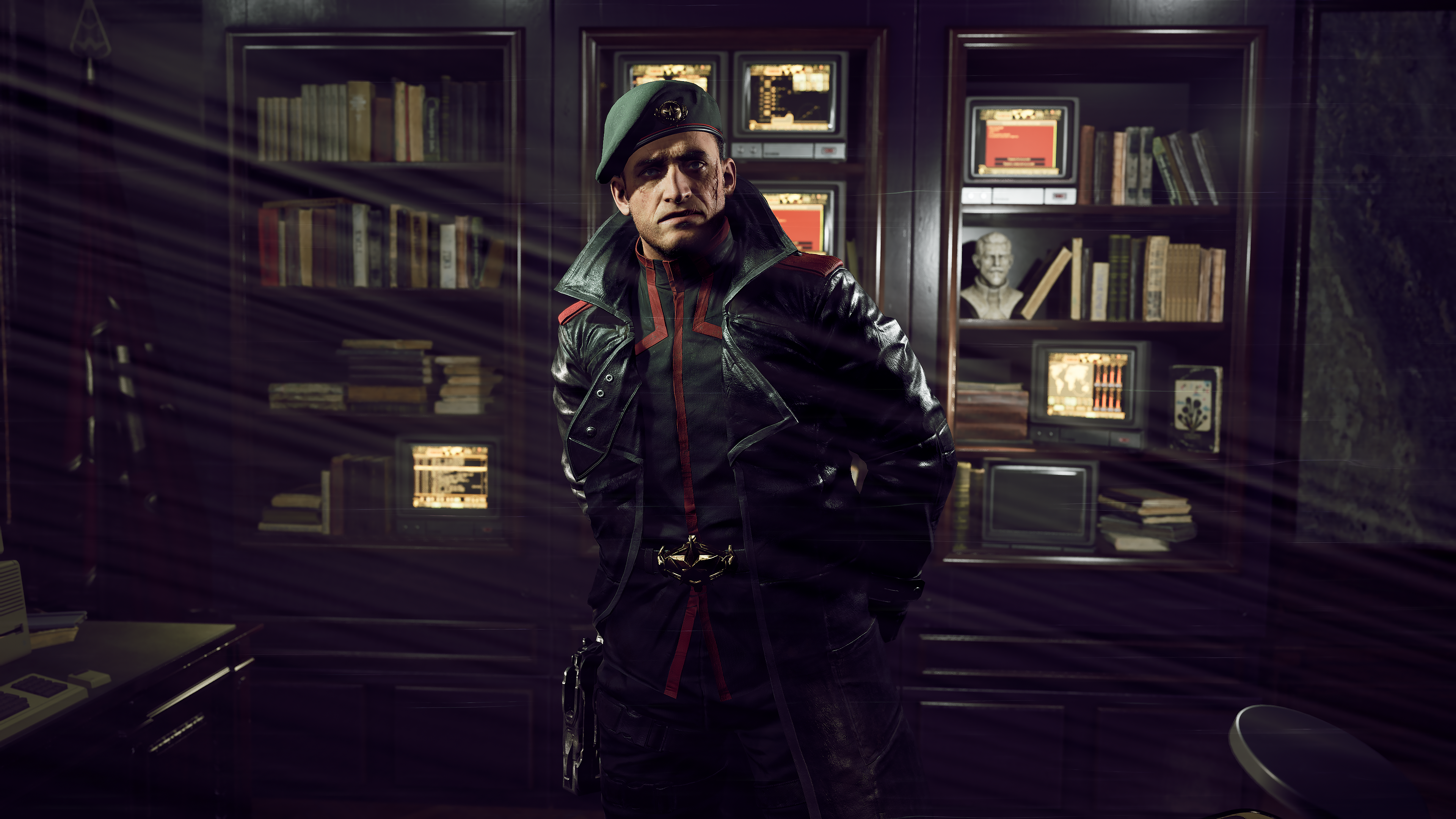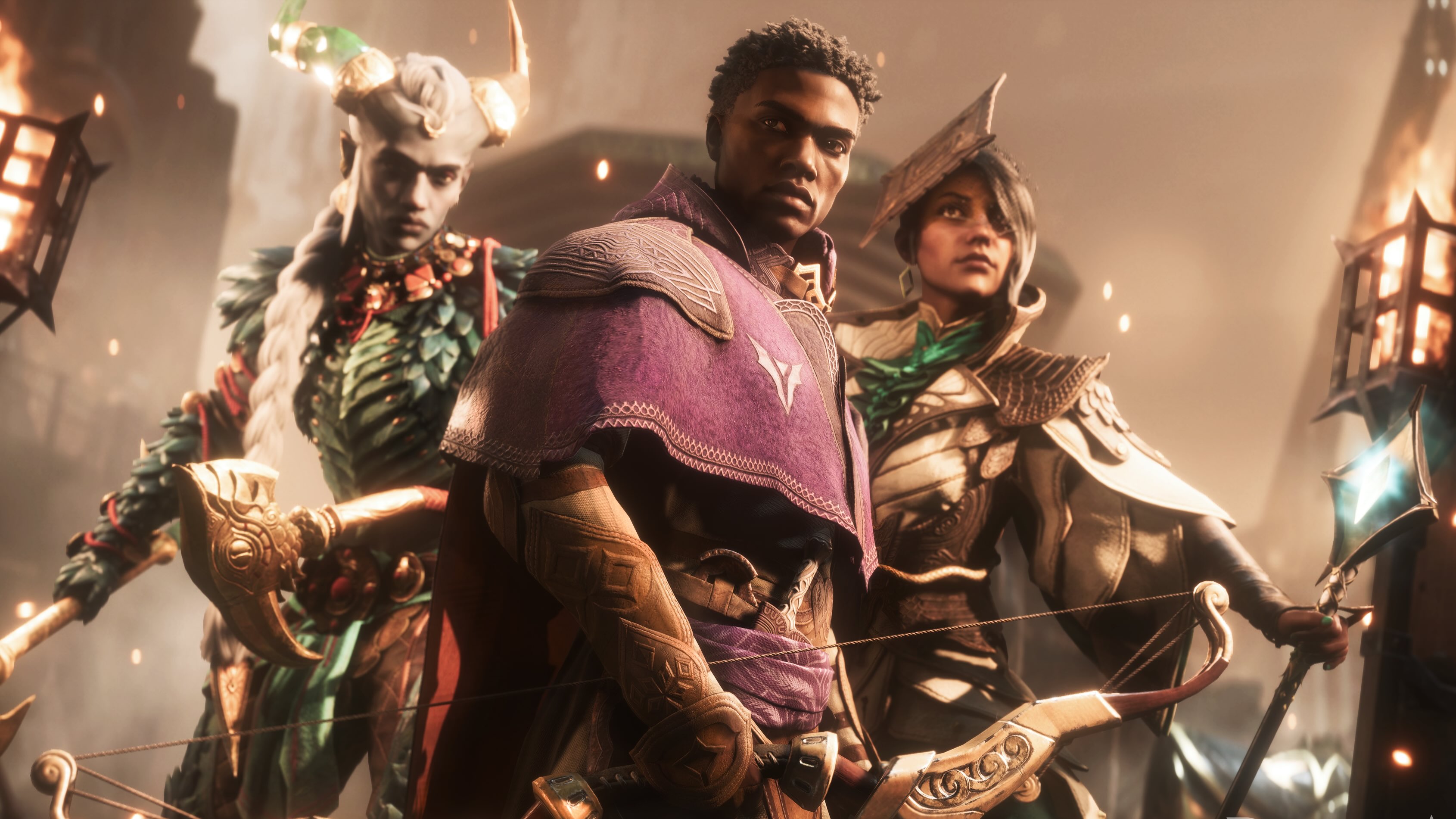
Thedas is more beautiful than ever in the hour I spent with Veilguard, but I'm left wondering if Dragon Age has shed its RPG heritage.
Here, let me relieve you. After spending about an hour watching some very tired BioWare developers navigate the opening of the next Dragon Age at this year’s Summer Game Fest, I can assure you that the weird, hero-shooter tone of that companion reveal trailer doesn’t carry into the game itself.
No sir, Dragon Age: The Veilguard (née Dreadwolf) doesn’t have much time for japes at all. Things are grim. Dark. Fraught, even. A sinister hard-boiled egg named Solas is trying to dissolve the protective Veil between the physical and magical worlds, flooding the Tevinter Imperium capital of Minrathous with demons as a result.
(Image credit: EA)
The main character, Rook, is rather against that sort of thing. So are their demo companions: magical detective Neve, scout Harding (from Dragon Age: Inquisition), and Varric (basically the series protagonist at this point). Off you go on a quest to guard the Veil.
It’s precisely the kind of tense, race-against-the-clock plot you expect from a Dragon Age game, in other words. Strange, then, that once the demo was over, I kept finding myself thinking about Mass Effect, and about the possibility that Dragon Age—the last Baldur’s Gates-ian holdout at a BioWare increasingly determined to make cinematic, third-person action games—had left the last vestiges of its TTRPG-inspired past behind.
Imperial mint
(Image credit: EA)
The demo I was shown opened on Rook and Varric being faced with a choice. They were looking for Neve, and to find her, they needed to interrogate a bar owner. To do that, they had to get through her squad of hooded goons. The two options on either side of the dialogue wheel? Fight through the thugs, or persuade your quarry to come along quietly.
A quick aside: For the first time in the series, Veilguard lets you customise your character’s body type, sliding a cursor across a triangle that can make your character stocky and chubby or tall and muscular or anything in between, and you can pick from one of six backstories for them. If you’re nostalgic, you can choose to affiliate your Rook with the Grey Wardens or Antivan Crows, which you’ll recognise from all the way back in Origins.
My Rook was a human rogue with a rugby player’s build and an affiliation with the Shadow Dragons: Someone who seemed like she could take a beating, someone who didn’t seem too interested in conversation. Violence it was, then.
(Image credit: EA)
Following a quick, cinematic fight cutscene and a Telltale-style ‘Varric will remember that you hate diplomacy and love decking people’ pop-up, we were on our way, chatting all the while.
Readers who are actually just me will be glad to hear that BioWare seems to have resisted the Mass Effect: Andromeda proclivity for gratingly quippy dialogue in this one, at least. Varric makes some jokes, sure, but people spoke mostly like (dramatic, fantasy) people in my time in Minrathous.
Man, Minrathous. Maybe it’s just the Baar-Dau-pilled quarter of my brain that goes ape for any kind of floating fortress, but BioWare’s art and tech teams really knocked it out the park with this one. Minrathous looks incredible. It’s dark and spiky and vertiginous and awe-inspiring in all the right ways. It reminded me a lot of depictions of Valyria before the Fall, from the Song of Ice and Fire series: the dark heart of a dystopian magical empire, its skyline dominated by a magically suspended palace in the shape of a saw-toothed crescent.
(Image credit: EA)
Mass Age, or: Dragon Effect
It’s the kind of place—drunk on pride and power—that’s destined for a fall. And oh, look, here it is. Solas’ ritual to unVeil everyone is already underway, and demons have begun pouring into the lavishly rendered streets in level-appropriate droves.
Time for Rook and co to get to work, and do you know what that looks like more than anything, at least to me? Mass Effect. Specifically, Mass Effect 2 and 3, right down to particular enemies having blue and orange bars on top of their normal health bars representing barriers and armour respectively, and which you can whittle down quickly using the right abilities (or nailing a shot to a vital part with your bow, if you’ve got one).
Heck, the Rogue even has Arkham-esque parries
There’s even the classic Mass Effect ability wheel: Rook’s powers and cooldowns arrayed along the bottom and those of her companions on either side of the screen, with time pausing as you use it.
(Image credit: EA)
Dragon Age has become more and more cinematic and action-y as the series has progressed, of course, but what I saw in my brief time at SGF really has me wondering if the last nubs of its Infinity Engine roots have finally been sanded away. At no point did the overhead tactical view—a series mainstay that let you pretend you were playing an old-school Baldur’s Gate if you squinted—make an appearance.
Heck, the Rogue even has Arkham-esque parries, and it looks like everyone will have to hammer dodge to evade ranged attacks. Time was we’d let a D20 handle all that for us. You kids don’t know what we’ve lost.
You might think I’m some embittered THAC0 lover upset at the onward march of time. You’d be right. But wait! Note that I haven’t called anything I saw in my time with Veilguard ‘bad’. It was actually all quite dazzling: Slickly animated and, at times, even reasonably challenging for our presumably quite experienced demo-er. It just didn’t seem very Dragon Age, the series that kept some—I stress some—of its RPG roots even while Shepard went full third-person shooter and BioWare went about its doomed work on Anthem.
(Image credit: EA)
As someone with many hundreds of hours in Dragon Age: Origins, the most traditional RPG in the series, it’s a change in mechanical emphasis that has me sceptical, a scepticism that isn’t helped by BioWare’s recent track record. I’m very curious to see more, but right now BioWare’s fantasy RPG seems thoroughly, gorgeously fantasy, yet I’m wondering if the RPG is just hiding, or if it’s gone for good.

